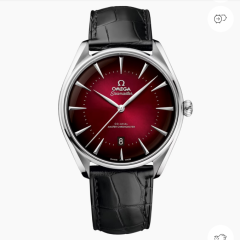Repairing a fully lumed up seiko 7009! Full walkthrough and video included!
-
Similar Content
-
Recently Browsing
- No registered users viewing this page.
-
Topics
-
Posts
-
Since I've learned lots here I thought I'd share a tip I picked up elsewhere and put to the test... For that 6105/6309 bezel lume pip look I've punched a clear plastic bottle of water, sanded it for the frost effect, removed the (smaller) pip from a standard/cheap replacement bezel, drilled it out to 2.5mm and fitted it using a smaller punch - fresh lume to hold into place. Pressing into place is a bit awkward but you soon get the hang of it, and the end result is pretty decent I'd say... The worst part probably being the drilling rather than the pip! It started out like this:
-
Ive asked this at a Seiko forum but I know there's plenty of experience here too... As I have it the recently discovered servicing technique on these is that you stuff the crown full of gaskets and work it until the recessed washer pops, remove the washer, switch the gasket out, dish the washer and push it back into place, levelling out the washer in the process? First attempt did not go to plan... I tried using a plastic pusher to manipulate the gaskets in the crown... Wasn't strong enough and I was struggling to even get the gaskets in up until it broke. Rethink consists of making/using actual tools: I don't have a staking set, so I've got the old man fashioning a metal pusher, essentially a 2.45mm OD tube with 1.6mm ID with a 6mm press the other end. Also got him on a dishing block/conical stake (sorry I'm terrible with terms) and a holder for the crown while I'm working on it... I figure that's enough to do the process described above? Push with the metal pusher, dish the washer with the conical stake, press back in with wider flat press (drilled centre so it doesn't catch on the tap). Plan is to stuff, press by hand and repeat? If that doesn't work by hand I've a drill press I could attach the pusher to for a little more leverage if needed. (Obviously I don't want to go too mad with that, and hopefully can avoid it altogether...) Sounds like a plan? I'd welcome any advice here, since I really don't want to wreck a crown. Having replaced all the other seals though id really like to sort these too. I welcome any input/advice from those who have been there and done it... Thanks!
-
You need to be more careful modifying the dial area. How does the bezel/lens fit on the front?
-
Recently inherited a box of my Grandfathers watches, nothing valuable, but some cool and some unique items. Seiko SQ, my aunt went to Hong Kong in the 80's I believe and picked one up for my Dad and Grandpa. Below are picture, I believe its a 1987 5Y22-8A08. Put a new battery in it and it fired right up! Its probably been a drawer for 20+ years. Looks like he only wore it a few times. Citizen Quartz 46-9181 with a seven jewel 7961B movement. It had what looked like some moisture damage, and a corroded battery. Swapped it with a 371 but it would only vibrate the second hand. Tried trouble shooting while in the case but eventually ended up pulling the movement out and cleaning with some naphtha and blowing it out and running it on the demagnetizer for a while to free up the movement before cleaning the band and case lightly oiling and reassembling everything. Now its back up and running. Based on the adjustment of the band I believe my Grandmother actually wore this watch, and I made the mistake of telling my wife that. Now its her watch! The most interesting so far is a 72-73 Benrus. I tried putting a battery in it, but no joy. Ran it on my little tester, no signal from the coil, tried to spin it up. Just the slightest flicker of the second hand. Put some naphtha where I could reach, and tried again to spin it up. Nope. This watch is interesting in that it does not look like the back comes off, there is a window you unscrew to access the battery, a huge SR44. Ordered a crystal puller and will begin disassembly next week. I was able to find a little bit about this watch though a google image search; BENRUS H010 TECHNIQUARTZ 1972 1st US made Quartz made by Benrus. Using a custom E-block with the step Motor, a power switch and a Moto Chip driven by MotoQ at 32KHz, on modified ETA mechanical movement. https://www.crazywatches.pl/benrus-h010-techniquartz-1972
-




.thumb.jpg.19a9c4ff164d78d516aa9f05a063752b.jpg)


Recommended Posts